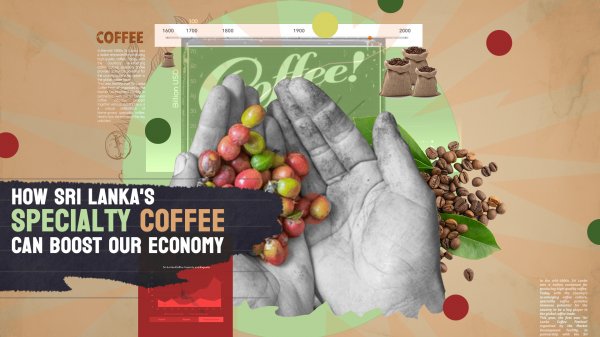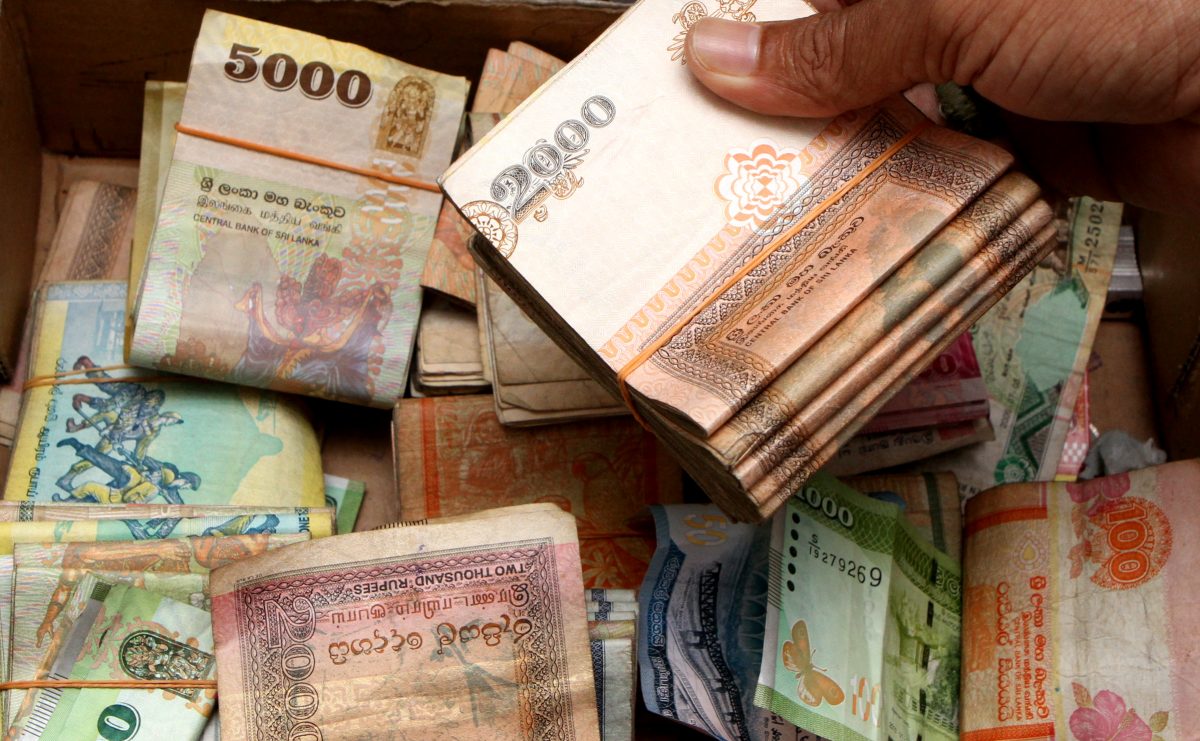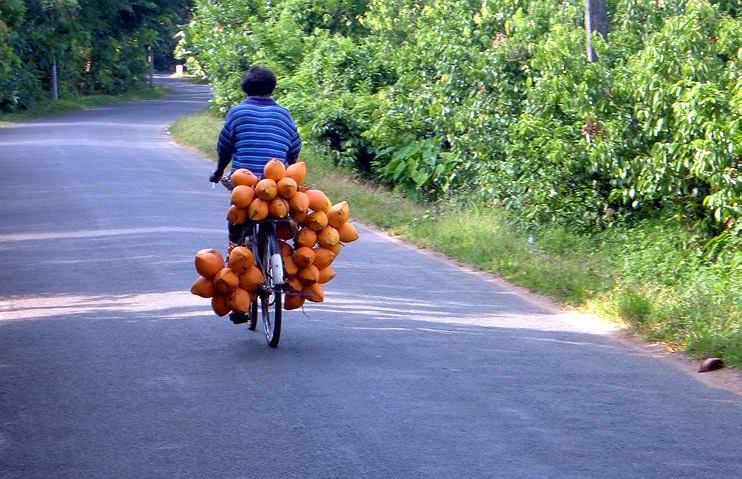
Island life and coconuts go hand in hand. From the Caribbean to the Pacific Islands, coconuts play a key role in the lives of the natives. The same goes for Sri Lanka, a little island south of India, with a plentiful supply of coconuts. That probably explains why, even in London, Maggi Coconut Milk Powder (made and exported from Sri Lanka) tends to be somewhat of a big deal, with packs flying off Tesco shelves like hot cakes.
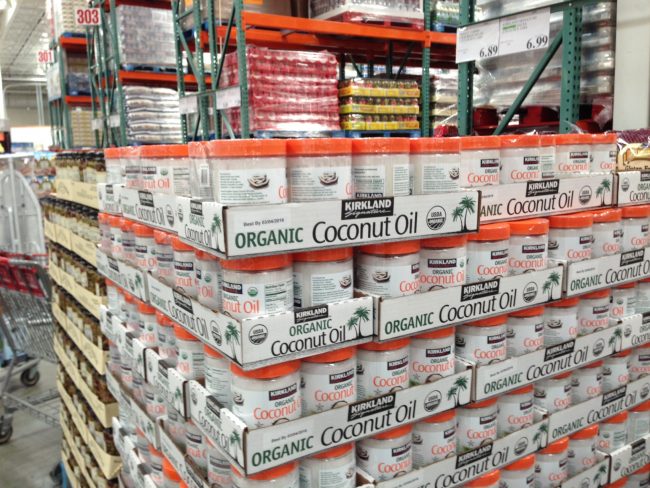
Cases of Kirkland Organic Coconut Oil at Costco. Image courtesy: guysandgoodhealth.com
But what Sri Lankans have known for centuries, the world is only waking up to now. Coconuts and coconut-based products are all the rage the world over and are widely applauded for their health benefits. Why is coconut so popular nowadays, and how can Sri Lanka take advantage of this new global trend? That’s exactly what this article aims to analyse, by putting the subject under the lens of the economic microscope.
Don’t worry, though. We’re going to keep it simple.
So How Did It All Start?
Good question.
Let’s start off by looking at Google Search trends for the term “coconut”. In order to do so, we used Google Trends, a free online tool made available by Google. And here’s why: we live in an age where people look to Google for answers to anything and everything. Therefore, if lots of people start searching for the same thing on Google at the same time, it would eventually be possible for us to pinpoint with reasonable accuracy the point in time at which something ‘became a trend’.
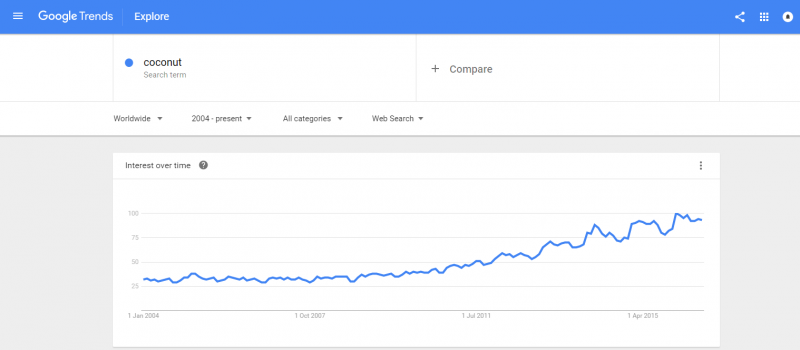
Google searches for the word ‘coconut’, January 2004-August2016
As you can see, searches for the word “coconut” remained relatively stable up until mid-2008. However, somewhere around October 2008, the number of searches gradually started trending upwards. (Do note that when it comes to this tool, the numbers represent search interest relative to the highest point on the chart for the given region and time. A value of 100 is the peak popularity for the term.)
Let us now repeat the same process for the keyword “health benefits of coconut”.
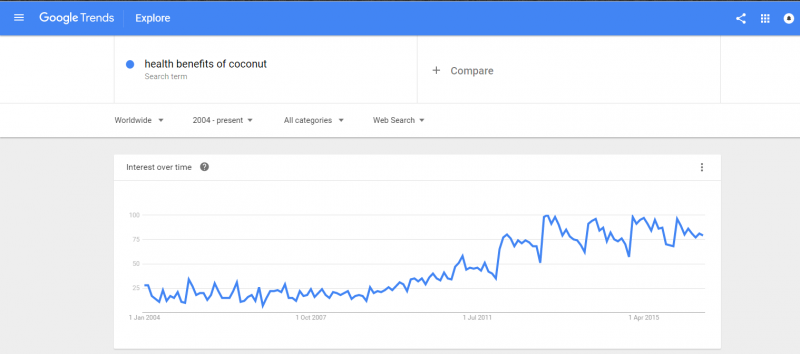
Google searches for “health benefits of coconut”, January 2004-August 2016
Notice how both graphs look very much alike. Of course, we’ve only used two data points, but given how closely related they are, it suits our purposes very well. Therefore, it is fairly safe to assume that coconuts started to become a trend sometime during the global financial crisis.
Simply put, what we’ve done here is use modern human behaviour to infer the point in time at which coconut became a trend. Pretty neat, isn’t it?
All this time series analysis brings us to another question. Now that we’ve established the ‘when’, what about the ‘why’? In other words, why exactly did coconuts and coconut-based products suddenly explode in popularity?
The answer has everything to do with coconut water and the role branding plays in society.
Somewhere in late 2009, Hollywood celebs who were the faces of the “healthy living” movement chose coconut water as their beverage of choice. Savvy marketers at hitherto obscure coconut water brands got to work (hats off to them), quickly striking endorsement deals and also refreshing their branding and packaging to suit a young, hip audience. And since celebrities have the power to influence trends, it was only a matter of time before everyone started running after coconuts, figuratively.
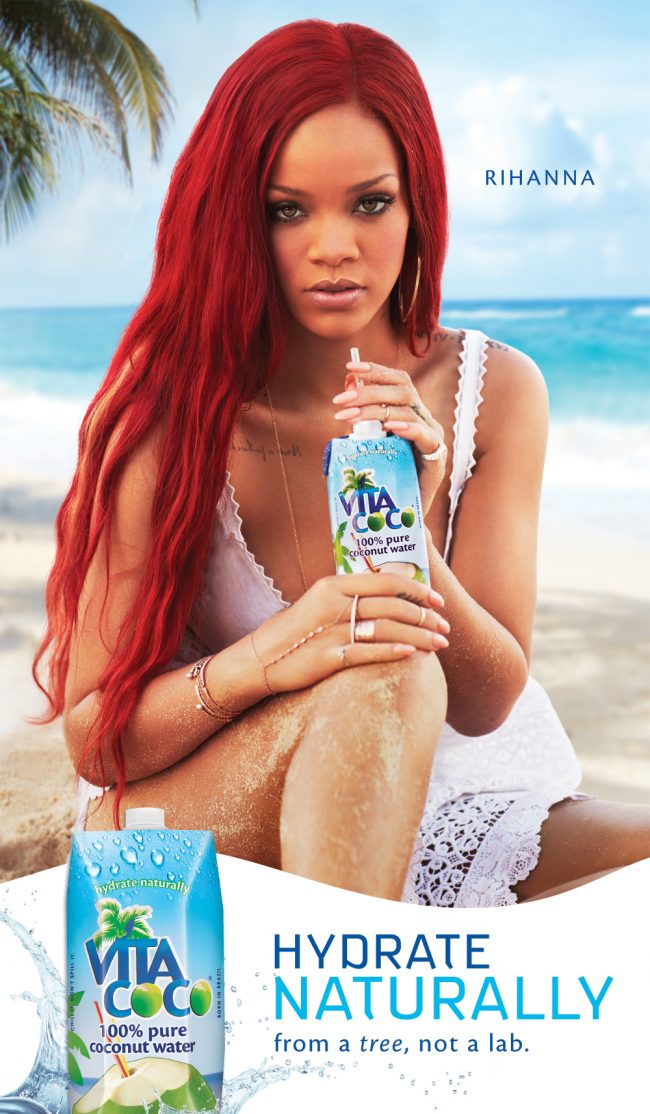
Brands such as Vita Coco massively benefited from celebrity endorsements. Rihanna was one of Vita Coco’s earliest campaign faces. Image courtesy: Vita Coco
This paved the way for brands such as Vita Coco, Zico, and O.N.E to grow and go global. Coconut water ended up becoming very much a part and parcel of the beverage industry, driving Coca-Cola and PepsiCo to invest in Zico and O.N.E respectively.
Driven by the success of coconut water as a product, other companies ploughed R&D budgets into coconut-related products. This resulted in the birth of a vast number of new products, ranging from food supplements to personal care products, and even ice creams. Some of these product categories were brand new, while some were existing products and/or product categories.
How Has This Affected The Global Coconut Industry?
For one thing, producers are moving towards higher-margin, specialty products like coconut water, since that is where the demand is.
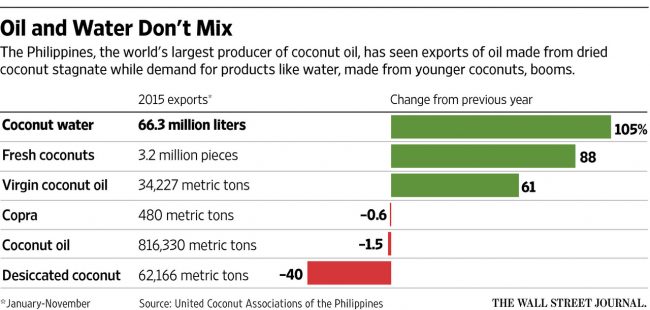
Courtesy: The Wall Street Journal
The flip side of this is that, in order to cater to demand, they need to harvest young coconuts, which in turn leaves fewer coconuts with which to produce oil. (Mature coconuts are needed in order to produce oil). But that is a story for another day.
How Can Sri Lanka Benefit From This?

A man climbs a coconut tree in order to harvest the nuts. Image credit: Panoramio
Off the bat, encouraging local farmers to focus exclusively on specialty products will only aggravate the shortage of coconut oil in the global market. Therefore, such a course of action is inadvisable.
Before we go any further, however, it is necessary for us to acknowledge that Sri Lanka lacks any sort of a solid national policy to develop a sustainable coconut industry over the long term. Therefore, in order to take advantage of the rising global demand for coconuts and related specialty products, it is necessary to first formulate a proper plan which will deal with the largely supply-side issues which continue to hold back the industry.
Luckily, the Coconut Research Institute of Sri Lanka has done exactly that, in its “Strategic Plan for the Coconut Industry 2016-2020”. Its plan deals with points raised by local economists and industry experts, and provides comprehensive solutions.
According to the CRI, the main issues affecting the industry are as follows:
- Low yield of coconut lands
- Poor land/land use efficiency
- Shortage of lands in traditional areas
- Vulnerability of coconut to climate change
- Shortage of labour
- Vulnerability of coconut to pests and diseases
- Uncertainty of coconut production and markets
- Low efficiency, profitability, and less diversification of coconut-based products
- Low adoption of recommended technologies
- Low competitiveness
- Insufficient national production of edible oils
It is especially important to direct the attention of the industry’s stakeholders towards the problem of low productivity which in turn hurts the competitiveness of the product.
The CRI has put forwards strategies to deal with the above problems. And they are as follows:
- Genetic improvement of coconut
- Developing of in vitro propagation protocols
- Enhancing soil quality
- Rehabilitating coconut soils
- Managing soil water
- Developing improved farming systems
- Developing appropriate cultivation practices in non-traditional areas
- Mitigating and adapting to climate change effects
- Developing sustainable pest and disease management systems
- Developing technologies for value addition and process improvements
- Mechanizing farm and industrial operations
- Managing uncertainty of yield and markets
- Analysing socio-economic status of recommended technologies
- Developing technologies to reduce cost of production
- Developing/improving propagation methods and nutrient and pest management in oil palm
- Transferring technologies to stakeholders
- Providing specialised services to the stakeholders
- Developing human resource, infrastructure, and library facilities to support research and development
The CRI’s plans, if executed to perfection, can go a long way towards helping Sri Lanka to establish itself as a leader in the export market for coconuts, thereby putting the country on par with, or at least closer to, producers such as the Philippines. At a time when Sri Lanka’s agri exports continue to post lacklustre performance, such measures would go a long way towards improving the stock of the farmers, their families, communities, and by extension, the entire country.
Featured image credit: Srimal Ahangamage/treklens.com


